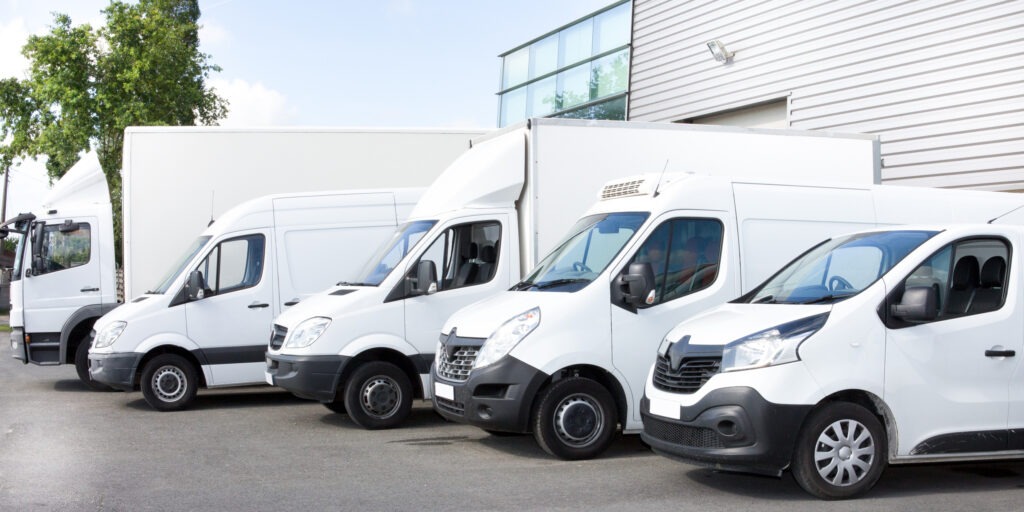European light-commercial vehicle market remains firmly in negative territory
26 September 2022

At a glance, the latest year-on-year figures suggest the EU light-commercial vehicle (LCV) market modestly improved last month. But this was merely because of working-day differences. On that basis, Autovista24 estimates that the LCV market fell by around 14% last month and 16% in July.
The EU LCV market contracted by 12.1% year on year in August, with 87,343 units registered, according to the latest data from the European Automobile Manufacturers’ Association (ACEA). This appears to be an improvement on the 20.6% year-on-year downturn in July. However, there was one less working day across Europe in July and one more in some EU markets, including Germany, in August, compared to the respective months in 2021.
This performance contrasts with the development of EU new-car registrations last month, which enjoyed its first year-on-year growth after 13 consecutive months of decline. This points to the LCV sector being more adversely affected by the pre-existing semiconductor shortages and additional supply challenges caused by the war in Ukraine and COVID-19 lockdowns in China.
Outside of the EU, there was no let-up in the decline of the UK’s LCV market, which has endured an eighth straight months of year-on-year downturns, with registrations falling 24.6% last month. As this contraction was far greater than in the EU, the Europe-wide fall in LCV registrations last month was 13.7%, according to ACEA’s figures.
No immediate improvement in sight
Of the four major EU LCV markets, France and Italy suffered double-digit year-on-year declines last month, whereas Germany contracted by a comparatively healthy 6%. Spain bucked the trend, with 9,047 registrations equating to growth of 8.8%.
Nevertheless, Spain, along with France and Germany, has contracted by more than 20% in the year-to-date. Italy has fared better, with 107,413 registrations equating to a year-on-year downturn of 12.4% in the first eight months of 2022.
Austria’s LCV market has suffered the greatest losses so far in 2022, however, contracting by 62.7% compared to the same period last year. Only two EU member states have posted positive results – Cyprus (6.3%) and Slovakia (2.5%).
Across the EU, 22.3% fewer light-commercial vehicles have been registered than in January to August 2021, essentially no change compared to the 23.4% decline in the first seven months of the year. The UK has performed slightly below par in the year to date, with 24.2% fewer LCVs registered than in the same period last year. Accordingly, the overall European market contracted by 22.6% in the first eight months of 2022, in line with the 23.5% fall through July.
Supply bottlenecks should ease throughout the remainder of 2022, albeit with a more positive impact in the passenger-car sector. However, rising inflation, interest rates, and energy costs are adding operational costs for businesses, which will invariably impact demand. The scope for much improvement by the year end is, therefore, very limited.
Heavy trucks provide respite
In contrast to Europe’s beleaguered LCV sector, medium and heavy commercial vehicles (MHCVs), with a gross vehicle weight (GVW) over 3.5 tonnes, posted year-on-year growth of 18.1% in August.
LCVs dominate the commercial-vehicle market, however, and total CV registrations in the EU declined 8% year on year to 110,261 units. Adjusted for working days, the estimated 10% decline last month was modestly better than the adjusted 13% downturn in July.
With the UK performing similarly to the EU, MHCV registrations grew 17.5% Europe-wide last month. The sector consists primarily of heavy trucks, with a gross vehicle weight over 16 tonnes, registrations of which increased 23.7% year on year during August. The heavy-truck sector has grown in the year-to-date too, by 2.9%, and combined MHCV registrations are down only 0.8% in the first eight months.
Overall, the whole European commercial-vehicle market contracted by 9.6% year on year last month and has contracted 19.2% in the first eight months of 2022. Despite positive contributions from heavy trucks, all of Europe’s leading CV markets have posted double-digit declines through August. Italy has performed comparatively well, contracting by 11.1%, but only five small European markets have grown – Cyprus, Latvia, Lithuania, Slovakia, and Iceland.



